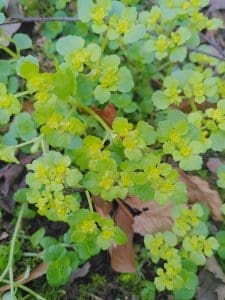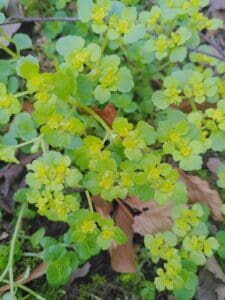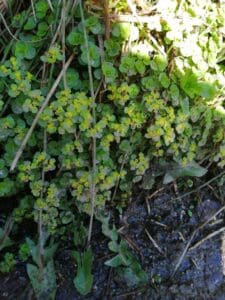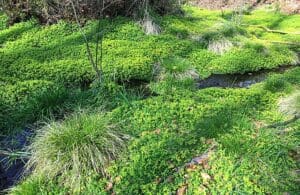Opposite-leaved Golden Saxifrage / All Year / Edible
Opposite-leaved Golden Saxifrage is quite a mouthful, especially for such a small plant, often found in damp places it provides a surprising crunch to salads.
Common Names
Creeping Jenny, buttered eggs
Botanical Name
Chrysosplenium oppositifolium
Scientific Classification
Kingdom – Plantae
Order –Saxifragales
Family – Saxifragaceae
Physical Characteristics for Opposite-leaved Golden Saxifrage
OLGS (love a good acronym) is a perennial plant, growing in short, dense patches up to 12cm tall and up to several meters across
Leaves
The small (1-3cm), rounded leaves are arranged in clear pairs, and are an almost neon shade of acid green. They have a few broad, bluntly pointed lobes and are slightly hairy. It forms dense patches, the bright yellow-green catches the eye like splashes of gold in shaded damp areas.
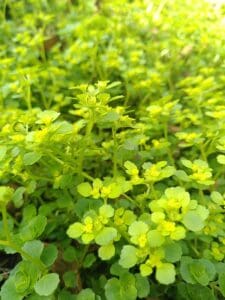
Flowers
The flowers are tiny (2-4mm across). They don’t have any petals, just 8 little golden yellow stamens and 4 sepals set against the rounded leaves. They add an extra yellow glow to the bright green mats of foliage between March and April
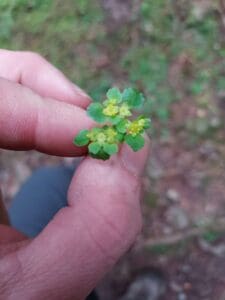
Stems
The stems are slightly hairy and square cross-sectioned
Habitat
Europe, including Britain, from Scandanavia south and east to Spain. Damp boggy areas, wet woodlands and next to streams.
Known hazards
None known.
Could be Confused with
The closely related but rarer Alternate-leaved Golden Saxifrage (Chrysosplenium alternifolium) is less common, and has longer stalks with rounder leaves that are arranged alternately instead of in pairs. It also has larger flowers.
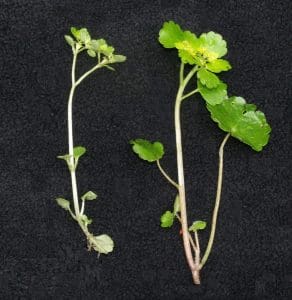
Edible Uses
Leaves and flowers – raw or cooked. They are a highly rated addition to salads or can be added to a stir fry, and have a slightly peppery taste. Wash them well before use to get rid of any soil or dirty water that may have splashed on during harvesting.
Notes on Herbal uses
It was believed in Russia to help with spleen issues, and possibly also to have anti-inflammatory and wound healing properties. However, there is no proven effectiveness in modern medicine. High in vitamins.
Extra notes from the Foragers
It’s botanical name Chrysosplenium derives from the Greek “chryso” (golden) and the New Latin “splenium” (spleen), referring to the flower colour and assumed medical uses.



